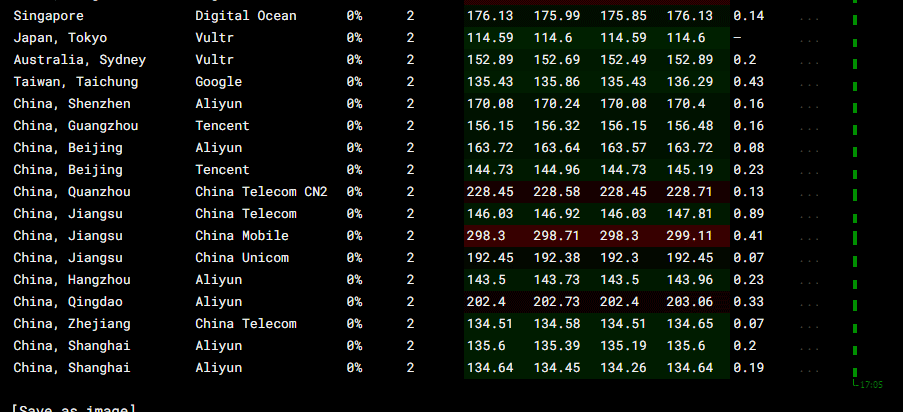大家好,又见面了,我是你们的朋友全栈君。
Mybatis 查询结果返回 Map、List
- 测试数据
- 查询返回单个结果
- 返回单个 Map
- PoemMapper.xml
- PoemMapper.java
- PoemMapperTest.java
- 输出结果
- 返回单个 LinkedHashMap
- PoemMapper.xml
- PoemMapper.java
- PoemMapperTest.java
- 输出结果
- 返回单个 Map
- 查询返回多个结果
- 返回 List<Map>
- PoemMapper.xml
- PoemMapper.java
- PoemMapperTest.java
- 输出结果
- 返回 Map<Map>
- PoemMapper.xml
- PoemMapper.java
- PoemMapperTest.java
- 输出结果
- 返回 List<LinkedHashMap>
- PoemMapper.xml
- PoemMapper.java
- PoemMapperTest.java
- 输出结果
- 返回 Map<LinkedHashMap>
- PoemMapper.xml
- PoemMapper.java
- PoemMapperTest.java
- 输出结果
- 返回 List<Map>
- 统计结果返回 List
> 再转 Map > - PoemMapper.xml
- PoemMapper.java
- PoemMapperTest.java
- 输出结果
- 参考资料
测试数据
数据库 SQL测试数据 – 笑虾原创诗词表
查询返回单个结果
返回单个 Map
设置返回值类型 resultType="java.util.Map"
PoemMapper.xml
<code style="margin-left:0"> <select id="selectMap" resultType="java.util.Map">
SELECT id, title, author FROM poem LIMIT 1
</select></code>PoemMapper.java
以Map为最外层容器时就要加 @MapKey("id") 指定提取 id 作为 key。
<code style="margin-left:0"> @MapKey("id")
Map<Long, Object> selectMap();</code>PoemMapperTest.java
<code style="margin-left:0"> @Test
public void selectMap() {
Map<Long, Object> map = poemMapper.selectMap();
System.out.println(JSON.toJSONString(map));
} </code>输出结果
注意:Map是无序的,所以这里的字段并没有按SQL中的顺序来显示。
<code style="margin-left:0">{
"1":{
"author":"笑虾","id":1,"title":"痴情癫"}}</code>返回单个 LinkedHashMap
用来实现按SQL中的顺序来显示字段。
PoemMapper.xml
设置返回值类型 resultType="java.util.LinkedHashMap" 。
<code style="margin-left:0"> <select id="selectLinkedHashMap" resultType="java.util.LinkedHashMap">
SELECT id, title, author FROM poem LIMIT 1
</select></code>PoemMapper.java
<code style="margin-left:0">LinkedHashMap<String, Object> selectLinkedHashMap(); </code>
PoemMapperTest.java
<code style="margin-left:0">LinkedHashMap<String, Object> linkedHashMap = poemMapper.selectLinkedHashMap();</code>
输出结果
注意:LinkedHashMap中字段按SQL中的顺序显示。
<code style="margin-left:0">{
"id":1,"title":"痴情癫","author":"笑虾"}</code>查询返回多个结果
- 用
List保留住SQL中ORDER By的排序。 - 用
LinkedHashMap保留住SQL中SELECT 字段的排序。
返回 List<Map>
PoemMapper.xml
<code style="margin-left:0"> <select id="selectMapList" resultType="java.util.Map">
SELECT id, title, author FROM poem
</select></code>PoemMapper.java
<code style="margin-left:0">List<Map<String, Object>> selectMapList();</code>
PoemMapperTest.java
<code style="margin-left:0">List<Map<String, Object>> maps = poemMapper.selectMapList();</code>
输出结果
<code style="margin-left:0">[
{
"author":"笑虾","id":1,"title":"痴情癫"},
{
"author":"笑虾","id":2,"title":"爱云说"},
{
"author":"笑虾","id":3,"title":"恨灯小"},
略。。。
]</code>返回 Map<Map>
PoemMapper.xml
<code style="margin-left:0"> <select id="selectMapMap" resultType="java.util.Map">
SELECT id, title, author FROM poem
</select></code>PoemMapper.java
<code style="margin-left:0">@MapKey("id")
Map<String, Map<String, Object>> selectMapMap();</code>PoemMapperTest.java
<code style="margin-left:0">Map<String, Map<String, Object>> stringMapMap = poemMapper.selectMapMap();</code>
输出结果
<code style="margin-left:0">{
"1":{
"author":"笑虾","id":1,"title":"痴情癫"},
"2":{
"author":"笑虾","id":2,"title":"爱云说"},
"3":{
"author":"笑虾","id":3,"title":"恨灯小"},
略。。。
}</code>返回 List<LinkedHashMap>
PoemMapper.xml
<code style="margin-left:0"> <select id="selectListLinkedHashMap" resultType="java.util.LinkedHashMap">
SELECT id, title, author FROM poem
</select></code>PoemMapper.java
<code style="margin-left:0">List<LinkedHashMap<String, Object>> selectListLinkedHashMap(); </code>
PoemMapperTest.java
<code style="margin-left:0">List<LinkedHashMap<String, Object>> linkedHashMap = poemMapper.selectListLinkedHashMap();</code>
输出结果
<code style="margin-left:0">[
{
"id":1,"title":"痴情癫","author":"笑虾"},
{
"id":2,"title":"爱云说","author":"笑虾"},
{
"id":3,"title":"恨灯小","author":"笑虾"},
略。。。
]</code>返回 Map<LinkedHashMap>
PoemMapper.xml
<code style="margin-left:0"> <select id="selectMapLinkedHashMap" resultType="java.util.LinkedHashMap">
SELECT id, title, author FROM poem
</select></code>PoemMapper.java
<code style="margin-left:0">@MapKey("id")
Map<String, LinkedHashMap<String, Object>> selectMapLinkedHashMap();</code>PoemMapperTest.java
<code style="margin-left:0">Map<String, LinkedHashMap<String, Object>> mapLinkedHashMaps = poemMapper.selectMapLinkedHashMap();</code>
输出结果
<code style="margin-left:0">{
"1":{
"id":1,"title":"痴情癫","author":"笑虾"},
"2":{
"id":2,"title":"爱云说","author":"笑虾"},
"3":{
"id":3,"title":"恨灯小","author":"笑虾"},
略。。。
}</code>统计结果返回 List> 再转 Map>
PoemMapper.xml
<code style="margin-left:0"> <select id="countByAuthor" resultType="javafx.util.Pair">
SELECT author, count( id ) AS `数量` FROM poem GROUP BY author
</select></code>PoemMapper.java
<code style="margin-left:0">List<Pair<Integer, Long>> countByAuthor();</code>
PoemMapperTest.java
<code style="margin-left:0">List<Pair<Integer, Long>> list = poemMapper.countByAuthor();
Map<Integer, Long> map = list.stream()
.collect(Collectors.toMap(Pair::getKey, Pair::getValue));</code>输出结果
查询结果返回的是这样的一个List。用List实现也可以。
<code style="margin-left:0">[{
"key":"笑虾","value":16},{
"key":"金小侠","value":3}]</code>还需要用Collectors.toMap转为Map才得到我们想要的最终效果。
<code style="margin-left:0">{
"笑虾":16,"金小侠":3}</code>参考资料
笑虾:Mybatis 查询结果返回 Optional<T>
javafx.util.Pair
《Java8实战》 – 读书笔记 – Stream流操作2:用流收集数据:6.1 收集器简介 – toMap
版权声明:本文内容由互联网用户自发贡献,该文观点仅代表作者本人。本站仅提供信息存储空间服务,不拥有所有权,不承担相关法律责任。如发现本站有涉嫌侵权/违法违规的内容, 请发送邮件至 举报,一经查实,本站将立刻删除。
发布者:全栈程序员栈长,转载请注明出处:https://javaforall.cn/185900.html原文链接:https://javaforall.cn
未经允许不得转载:木盒主机 » mybatis返回值_存储过程获取查询结果

 木盒主机
木盒主机 搬瓦工VPS最新优惠码 搬瓦工最高优惠6.81%优惠码 promo coupon code
搬瓦工VPS最新优惠码 搬瓦工最高优惠6.81%优惠码 promo coupon code  RackNerd:美国VPS 黑五优惠折扣 1核768RAM $10.28/年+神秘盒子 可随机减免金额
RackNerd:美国VPS 黑五优惠折扣 1核768RAM $10.28/年+神秘盒子 可随机减免金额 10G.BIZ【年终钜惠】美国/日本/韩国/香港独立服务器 秒杀仅24起,站群仅需99,三网CN2GIA五折抢购。CERA洛杉矶云服务器仅2.4起
10G.BIZ【年终钜惠】美国/日本/韩国/香港独立服务器 秒杀仅24起,站群仅需99,三网CN2GIA五折抢购。CERA洛杉矶云服务器仅2.4起 2022年RackNerd 美国VPS促销:4TB月流量11.88美元/年,支持支付宝,老优惠$9.89美元/年
2022年RackNerd 美国VPS促销:4TB月流量11.88美元/年,支持支付宝,老优惠$9.89美元/年